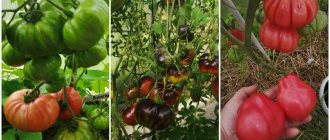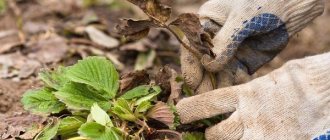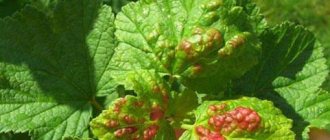Wild forest berries are good for health and contain a rich set of vitamins, but picking them by hand is a huge physical labor that requires good health and a lot of free time.
A simple device for picking blueberries, which I show with three simple designs, can reduce the load on the body and significantly speed up this process.
Their design, materials and manufacturing technology are different, which affects the process of harvesting berries. Therefore, get to know everyone and choose the option that suits you best.
What is such a combine?
According to the principle of operation, all devices used to collect forest and garden gifts are divided into 3 groups:
- manual;
- mechanical;
- vacuum
The last two groups are products manufactured industrially. Mechanical models are expensive and designed for farms and large industrial enterprises. Outwardly, they look like grain harvesters.
| Harvester type | Main machine components | Operating principle |
| Mechanical (trailer, self-propelled) | Conveyors | Pickers introduce branches into the space of shakers |
| Shakers | Berries fall onto the conveyor | |
| Pickers | The cleaning unit removes leaves and other debris. | |
| Cleaning unit | The cleaned harvest is sent to boxes | |
| Vacuum | Hopper capacity 12-15 l | Berry bushes are treated with a flexible hose-manipulator |
| Air duct (hose) with manipulator tube 1.2 m long | Raw materials (blueberries, lingonberries, cranberries) are moved through the tube to the container | |
| Bell with nozzles (combs) | Garbage is removed and does not enter the storage container | |
| Engine 7500 rpm | The device looks like a backpack, it has straps |
Comment!
Vacuum devices are suitable for harvesting hazelnuts.
Amateur gardeners and wild berry pickers use manual berry pickers. The materials that are used to make manual harvesters for collecting lingonberries and blueberries are different, but the design and operating principle of the devices have few differences:
- A mandatory element of all devices is a comb made of metal, plastic, wood, with teeth raised upward.
- The second important part of the berry picker is the body made of plastic, thick fabric, or metal. Berries are rolled into it when picked.
- The handle (handle) is needed for convenience. The berry picker is held with one hand during operation, and the branches with berries are directed onto the comb with the other hand.
- The damper is an additional, but not mandatory part of the device. It is mobile and prevents the berries from spilling out during operation. It is placed in the middle of the bucket; when it is lifted up, it opens slightly; when the scoop is tilted, the damper closes automatically.
Manual structures (grabbers, scrapers, combs, scoops, ladles) for picking berries are made with your own hands or purchased ready-made products.
| The best industrial combine harvester models | Description |
| Plastex | A machine with a convenient telescopic handle, it is used to collect the fruits of wild crops |
| K-1 | All parts of the device are metal; cranberries are harvested with this combine. |
| Bug | A plastic machine equipped with a comb is designed for collecting berries of different varieties and sizes. |
| Pigasov combine | Made of galvanized steel, comb pitch 5 mm |
| Alko | The material of the handle-holder and comb is plastic, the receiver bag is textile |
How to choose?
Choose according to the size of your plot or forest in which you will pick berries.
If you plan to collect fruits only for eating or making jam, then you should not spend money and purchase a whole combine or vacuum collector. A simple hand tool will suffice. It can also be customized to the types of berries you want. In fact, even with a manual unit you can pick different types of berries. For example, if you grow cranberries, then it is better to purchase a tool whose partitions are made of solid metal. Because of this feature, there will be no tangling of plants.
A vacuum collector will help you collect berries such as gooseberries, wild raspberries, strawberries, wild strawberries, currants, lingonberries, cranberries, sea buckthorn and many others. You can even collect hazelnuts.
Pay attention to the price too. A vacuum berry picker costs about 29 thousand
rubles and is intended for those who make fruit picking their business. Of course, it’s worth remembering the price of a mechanical harvester, namely 1-9 million rubles. This is a high price for a medium-sized plot of land.
Required tools and materials
Do-it-yourself berry harvesters are made from plastic bottles, cans, plywood, and metal. The set of tools required for the job determines the material. When working with galvanized steel and wire use:
- hammer;
- metal scissors;
- welding or tin, flux and soldering iron for soldering;
- emery wheel;
- drill;
- chisel;
- pliers.
To build a harvester from wood (plywood) with your own hands, you will need a circular saw or jigsaw, a grinding machine or sandpaper, self-tapping screws, a drill, and PVA glue. The easiest way to work is with plastic. To work with this material, a knife and scissors are enough.
How to make a harvester for collecting lingonberries and other berries with your own hands?
It’s easy to make a manual harvester yourself using the following drawings:
Materials you will need:
- metal wire;
- wooden slats;
- Sheet steel;
- pieces of plywood or plastic;
- fasteners.
The production process itself is as follows:
- Patterns are made from paper of all parts except wire ones;
- Using metal scissors, the bottom of the device and its body are cut out of a sheet of steel;
- On a separate narrow sheet of galvanized steel with a width equal to the size of the berry receptacle, one edge is bent - the future cutter;
- In the second part of this piece, holes are drilled every 0.4-0.5 cm, the diameter of which is equal to the diameter of the wire;
- The wire is cut into segments 10 cm long (the size of the wire should not exceed 0.3 cm), and inserted into the prepared holes, after which it is fixed by welding, bending the plate with a hammer, a wooden lath or any other convenient method;
- The ends of the resulting rake are bent with a side to protect the berries from rolling;
- The body is assembled using the selected fasteners, and the rake part is screwed to it. You can additionally cover it, for example, with wood or plastic for the safety of hands and plants;
- The handle can be made by bending a tube or double narrow plate from galvanized steel. You can also use any analogue that is idle on the farm (a door, a construction iron, etc.). It is attached by welding to the metal top of the structure or with bolts, for which holes must first be drilled.
To give the handle anti-slip properties, you can wrap it with electrical tape.
Thus, making a berry harvester yourself is not at all difficult, and cheap and affordable materials, as well as tools, will be used for this.
The only note: the dimensions of the container depend on the planned collection volumes, but here it is important to look for a proper balance between them and the convenience of holding the entire structure by hand, as well as the characteristics of crop growth
Drawings and dimensions
Making a harvester for picking berries with your own hands begins with drawing a drawing. The details of the body are drawn on graph paper or a piece of Whatman paper, indicating the dimensions. A ladle for collecting wild berries (lingonberries, cranberries, blueberries) consists of several elements:
- rectangular base;
- 2 sides;
- combs with teeth;
- top with handle;
- partitions.
The lower part of the bucket is not a solid part, it is a comb with teeth located at a distance of 5 mm from each other. Berries do not fall through cracks of this size, and small debris spills out. The drawing shows that the teeth are 1.5-2 cm longer than the body.
Similar designs: rakes, scoops, shovels, combs and others
The principle of “picking” berries from herbaceous bushes is implemented in some devices, either simpler in design, or designed to further simplify the work of the picker.
For example, the simplest options are ordinary wooden scoops with long teeth on the leading edge:
Some of their options are simplified as much as possible:
And some homemade models strike an excellent balance between simplicity, cheapness and functionality. For example, here's a combine:
It is made of wire, thread and a bag, but is very compact and is not inferior in ease of use to industrial options.
In these cases, the typical combine design is simplified for the fastest possible production. However, these options have their drawbacks. For example, the scoop has low sides and if accidentally tilted, the berries easily spill out of it. And wooden ladles get dirty quickly.
In other cases, inventors are working to make it possible to use a harvester to pick berries without bending over or crawling through the forest on your knees. The simplest option in this case is a special rake:
They can be used to comb the bushes without bending over, from time to time pouring the collected berries into a bucket.
A more complex option is to combine a rake and a combine. Simply put, the combine has a long handle that allows you to change the angle of the bucket itself. The video shows an example of such a device:
And, by the way, please note: even such complex designs can be made with your own hands. And if manufactured correctly, the resulting combine will be no worse than an industrial one
Therefore, it is worth saying a few words about how to correctly implement the basic principle in such a product.
Manufacturing instructions
From funds found at home, homemade devices for collecting forest gifts are made without drawings. The dimensions and shape of the devices determine the dimensions of the plastic products (bottles, containers) from which the bucket is made.
More complex products made from materials such as metal, wood, plywood are made strictly according to the scheme. First, patterns of all parts of the device are drawn on paper or cardboard, then they are transferred to metal or plywood sheets.
From sheet metal
A step-by-step description of the process of making a blueberry harvester with your own hands will help you in your work:
- take a galvanized sheet and apply the contours of the bucket body parts onto it according to a template;
- cut out all elements of the future design with metal scissors;
- Cut rods from wire (1-3 mm), at the comb of the scoop they will be the bottom and teeth;
- connect the body parts with rivets;
- Attach a curtain inside to the hinges; it will prevent the fruits from spilling out when picking;
- make a handle from a piece of pipe, flatten the ends and rivet them to 2 bent strips;
- Rivet the holder with handle to the body.
For the berries, sew a bag from coarse fabric and attach it with thin wire or rope to the body of the bucket. Bend the spoke teeth of the comb smoothly upward. How to fix the comb spokes is worth considering in detail.
Comment!
To make the hand comfortable, the steel handle is wrapped with several layers of electrical tape.
First, cut out 2 strips of galvanized steel, 3 cm wide and equal to the width of the comb. Fold each strip in half and cut 2 cm from each side of one half. On the fold, mark locations for holes with a pitch of no more than 5 mm.
Make cuts exactly according to the markings using an emery wheel. Insert wire into the holes of the first and second plates and solder them so that they do not fall out. Using a chisel and hammer, shorten the spokes to the same length and bend them.
Made of wood
Make a device for collecting berries from thick 9 mm plywood. Make a comb from old bicycle spokes or 3 mm wire. Place the templates of the body parts on a sheet and outline the contours. Using a jigsaw or hacksaw, cut out the blanks strictly along the drawn lines.
How and when to pick blueberries without damaging the berry plant: personal observations
I live in the middle climate zone, and I judge the beginning of blueberry ripening by observing the black currant fruits in the country. As soon as they begin to turn from brown to black, you can immediately head to the forest.
This usually happens at the end of the first week of July. At this time, the blueberry is not yet fully ripe; there are many small and green berries. It is not worth collecting them with mechanized devices: there is a lot of waste.
The leaves (like the fruits) stick very firmly to the bush and, when they get between the teeth, they crush and deform the berries, and when they come off the branches, they make picking very difficult. The garbage becomes saturated with juice and is difficult to separate.
During this period of time, I recommend abandoning any mechanisms and picking berries only with your hands. My speed is low: on average, I get a little more than 1 liter per hour, but it’s quite enough for home preparation and consumption, and I’m not involved in sales.
At this time, the collection is accelerated:
- a container for berries, made on the principle of a sippy inkwell, the ribbon of which I hang around my neck;
- cups on the fingers of each hand, saving the movement of the berry picker’s hands towards the container.
I consider the optimal time for harvesting with mechanized devices to be the end of July and August: blueberries are gaining strength, and the fruits, reaching their maximum size and the greatest amount of vitamins, have a pleasant taste.
It is during this period that I make my mechanized devices. Nowadays it’s not a problem to buy a factory-made blueberry harvester. But it is prestigious for a home craftsman to do it with his own hands, taking into account his individual abilities.
In this case, it is necessary to take into account a number of technical features that take into account the physical properties of the ripe berry. I include:
- fruit size;
- separation force from the stalk;
- the state of the juice and the crushing strength of the shell;
- presence of garbage.
How does fruit size affect puller design?
A ripe blueberry usually exceeds 6 mm in diameter.
I take this indicator into account by the gap between the teeth of the combine, choosing it to be at least 5 mm. It allows:
- cut off some of the underdeveloped fruits, leaves, needles, and other debris;
- collect only ripe varietal berries;
- do not damage the bush.
Which tooth shape is safer to tear blueberries from the stem?
Among industrially produced combines, designs with teeth made of round wire predominate.
It is more convenient to make them this way, but this does not have a very good effect when the berry is torn from the stalk. I showed this process in the figure. I share my observations.
At the round tooth, the fruit is pulled into the recess shown by the dotted lines and is slightly crushed. A flat surface immediately tears the berry away from the stalk, deforming it less.
In this case, it is important to avoid sharp edges at the ends, which can push through the thin shell. I do this by forming a very small chamfer on the ribs.
The width of the tooth also affects the operation of the device. A narrow profile fits better between twigs and leaves and creates less clustering. This reduces the formation of debris in the gaps and does not injure the ripened fruits and the blueberry itself.
How to reduce physical activity and keep your body energetic in the forest: 5 tips from an elderly berry grower
The following useful devices help me feel comfortable in nature:
- A mountain bike that allows you to cover a distance of about 15 km in half an hour on the highway and off-road. Thanks to the aluminum frame, it is lightweight and easy to carry through bushes and fallen trees. I always place it near the collection point.
- Folding chair. I sit on it and pick berries. The back is not subjected to physical stress.
- Factory made knee pads. They complement the functions of the high chair well.
- Old shoulder backpack. I carry the high chair and all my belongings in it, including a thin plastic raincoat in case of rain.
- One-liter plastic food buckets with lids. I pour blueberries from a ladle into them. I gave up buckets, even 5-liter ones, about 10 years ago: their height adds weight to the harvest, which puts pressure on the bottom layer of berries. The latter let out juice, which is bad. The container for soft fruits should be low and as wide as possible. I just take about 7 buckets, inserted one into the other. So they take up little space. I fill them two to three hours in advance, close the lids, place them in a food bag, tie them (insurance against spills when bending or falling) and go home.
If you forgot mosquito repellent ointment at home, it’s no problem. In such cases, my grandfather put a clean cloth (or a handkerchief) on the anthill, and after ten minutes he took it off. During this time, the fabric is saturated with formic acid.
It is enough to wipe open areas of the body and blood-sucking insects will not sit on this skin for several hours, and their buzzing is not scary.
Vacuum cleaner for collecting chokeberry
You will need a corrugated hose from an old vacuum cleaner, a plastic beer bottle with a long neck. It needs to be cut so that there is a piece left for joining with the corrugation. In the lower part of the cylinder, cut a window in which the lower edge is decorated with teeth.
Cutting teeth is difficult; you need a sharp knife. Assemble the combine:
- insert a cylinder with a jagged window into one end of the pipe for collecting berries;
- Secure the joint with several turns of electrical tape;
- Attach a T-shirt bag to the second end of the corrugation with electrical tape.
Comment!
The T-shirt bag needs to be intact, without holes. Picked berries will fall into it.
The operating instructions for this vacuum cleaner are simple. Hold the branch with one hand, and use a ladle to pick off the chokeberry fruits with the other hand. They will roll down the hose into a bag.
Shaking and sifting (blueberry fruit catching frame)
There are blueberry frames that roll under blueberry bushes and collect blueberries by shaking the branches. The branches or stems can be gently tapped with a rubber hand hose to dislodge ripe blueberries. You can also use an electric or pneumatic powered mechanical vibrator to shake the branches. If you shake off too many green blueberries, you're tapping too hard! By using such a simple, manually operated wheeled roller pick-up frame, you can harvest your crop in a short time. When you want to empty the frame, when it is full of blueberries, the wheels tilt backwards so that the ripe fruit rolls towards the back cover, which opens so that the berries fall directly into the container. The blueberries can then be gently run over an inclined blower and belt to remove any debris.
You can solve the problem of hot weather and long hours in the field picking blueberries by using this method. You can then offer your U-Pick customers freshly picked blueberries at retail prices! These blueberry catchers were the forerunners of modern mechanical harvesting systems. They were widely used in the 1950s and often used hand-held vibrators powered by batteries or compressed air to pick fruit. As discussed above, the fruit was caught in a tarpaulin-covered catching structure located under the plant. This simple system is incredibly effective, reducing harvest costs by 55% and cutting harvest time by over 200%. Blueberry harvesting frames are now difficult to find because manufacturers are now making mechanical harvesting systems and have stopped making catchers.
If you can't find a commercially available retaining frame, you can create your own.
Interesting on the topic: Add a little lemon zest to your life
Device for collecting rose hips
Rose hips sit tightly on the branch and are difficult to tear off. An ordinary comb will not work. To make a harvester for collecting rose hips with your own hands you will need:
- a piece of plastic sewer pipe;
- blades from a construction knife;
- knife;
- insulating tape;
- pipe plug.
The device can be made in two ways.
First option
Take a gray sewer plastic pipe with a diameter of 150-160 mm. Cut a piece to the required length. The size of the device depends on the preferences of the fruit picker, his height and strength. Make 3 deep slits of the required width from one edge.
Pros and cons of blueberry picking devices
The device looks like a small container with a comb at the end. The harvester, like a comb, slides between the branches of the bush, grabs the fruits, separating them from the stems with the help of “cats” - special curved hooks. The advantage of the device is that it speeds up berry picking and simplifies the procedure. The user of the mechanism is less tired. A novice picker can collect up to 12 kg of blueberries, blueberries or other berries in 7-8 hours.
A simple factory-made device is inexpensive - about a thousand rubles, which allows you to pay for it on the first day of collection. In addition, you can make a harvester yourself from scrap materials. The device also has negative sides: damage to berries and bushes. When harvested using this method, young shoots with leaves are cut off, which leads to a decrease in fruiting.
Device for picking cranberries while standing
Such a device can be made by a master who is fluent in tools. It is quite complicated, but you can use it to pick cranberries without bending over. All the parts of the box are cut out from a piece of thick plywood, as well as the comb strip.
The comb is easy to make:
- a number of holes are drilled in the plank;
- cut the wire into pieces of the required length;
- the teeth are fixed in the holes with glue.
Comment!
To prevent cranberries from spilling out during harvesting, install a movable plate.
The back wall of the bucket is made composite, the lower part is movable. It is attached to the top part on furniture hinges, and fixed to the side walls with pieces of rubber. This design allows you to stand and pour cranberries into a bucket.
To do this, one end of the rope is attached to the lid, the other is tied to a movable handle, which is bolted to a high handle made of 2 plastic tubes. Their length is determined empirically to make it convenient for the assembler.
Types of rakes
In order for the work carried out on the site to be as efficient as possible, but with minimal effort, you need to use different types of rakes for their intended purpose. Straight rakes are the most versatile type. In this type, the teeth are located perpendicular to the handle, slightly bent inward. They fit perfectly:
- for raking leaves;
- loosening the soil;
- leveling the ground after digging;
- extracting the remaining roots.
Among the traditional types, rakes with twisted teeth are distinguished - they break up piles of earth better and fluff up the soil well. Homemade wooden rakes usually have a wide base with short teeth. Their main purpose is to remove dry weeds and mown grass. For this species, wooden or aluminum cuttings are often made.
A fan rake consists of a base that resembles an open fan. The teeth are long thin rods bent at the ends. Often such rakes are used:
- for raking leaves and small debris from hard-to-reach places;
- cleaning the lawn before mowing;
- thinning the lawn.
When choosing a fan rake, it is worth considering some design features: in order not to injure young plants, it is better to use equipment with plastic teeth; for work along fences and in corners, triangular rakes, etc. are perfect. In agriculture, there are also different types of rakes, depending on the features of the mechanisms:
- tape;
- wheeled rake-tedders (GVK);
- wheel-finger, which also belong to the GVK;
- transverse, etc.
Among the units of the GVK class, experts call the following models the best: GVK-6, GVK-7, GVK-3, GVK “Solnyshko”, GVK-2.5KT. In particular, GVK-6 perfectly rake dried grass, hay and straw into windrows of a certain size, and also ted the swaths so that the grass mass is collected into an airy, non-twisted windrow. The principle of operation of the GVK is that while the unit is moving, the impellers rotate and move the grass with the fingers to the length of the wheel grip. After all the wheels have passed, the hay moves to the central axis, thus forming a windrow. Many craftsmen now make such units with their own hands, adapting equipment, terrain, crops grown, etc. to their needs and characteristics.
Harm of mechanized berry picking for berry bushes
Devices for collecting fruits make work 2-3 times easier and faster, which is why they are actively used by harvesters. Handmade tools injure bushes if certain rules are not followed during their manufacture.
Devices are considered safe if there are no sharp cutting edges and the ends of the teeth are rounded. The comb does not scratch the stems during operation. The gap between the spokes is optimal, allowing leaves and branches to pass through, but delaying fruit.
Devices that do not meet these requirements are considered poaching devices. The Ministry of Natural Resources is fighting against their use. With a barbaric attitude towards nature, the productivity of berry fields decreases, and it takes years to fully recover. In Russia, Ukraine, and Belarus, collectors are fined for using poaching hand-held devices.
Classification of berry harvesters
Based on the level of mechanization, all berry harvesters are usually divided into:
- Manual without mechanization of processes. The designers were inspired to create them by ancient prototypes that have been used on our lands since time immemorial, their appearance reminiscent of a short-handled rake with a bag or box tied to it. Nowadays these are very ergonomic containers with a handle, equipped with a wire or sheet palisade to grip stems or branches;
- Manual with mechanization of processes. On the modern market there are products held in the hand that use a motor for frequent translational movements of the removing block to crush the berries from the branch, or vacuum suction; 3. Automatic under operator control. Outwardly they resemble ordinary forage or grain harvesters, with the difference that they do not have mowing blocks or digging elements. And separation processes, taking into account the fragility of the product, have their own characteristics.
Based on available assembly volumes, industrial berry units and devices for home use and small farms are distinguished.











